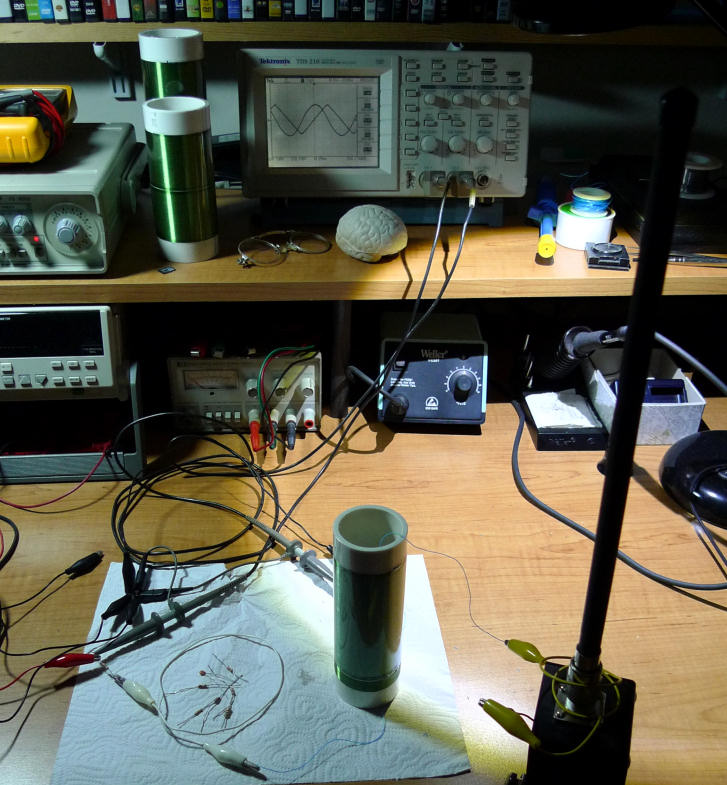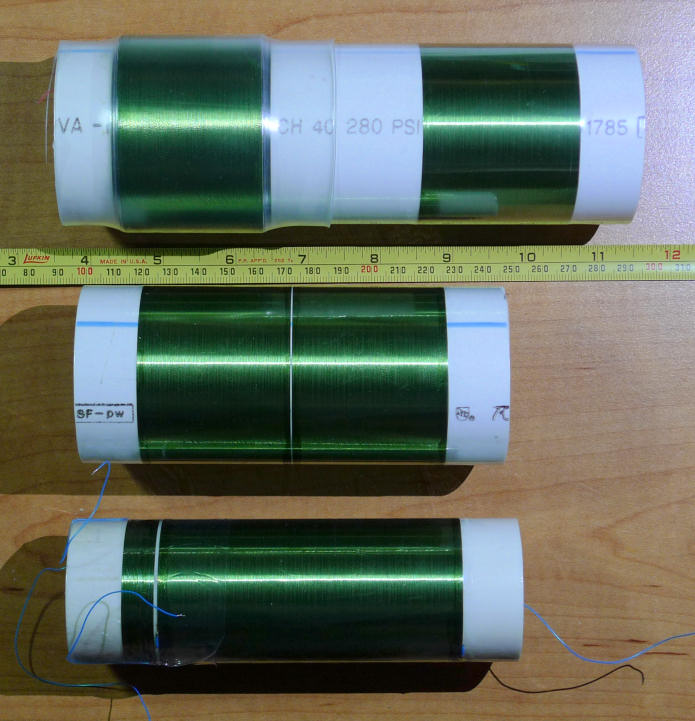The capacitance between the primary and secondary is really bugging me - this is supposed to be a "capless" design after all. Yesterday I measured it more exactly as 108 pF, and was able to obtain similar results in LTspice using 1/2 of this capacitance from primary to secondary, which makes sense. I also tried a makeshift auto-transformer configuration not utilizing the primary winding and was able to get seemingly decent results even though the two secondary coils aren't coupled well at all.
So today I wound a new single layer coil of double length (~100 mm) with a center tap. On the bench I'm driving the center tap (50 ohm drive) with a triangle, one end of the coil is grounded through a 1k resistor, the other coil end is connected to the antenna. Am seeing roughly the same amplitude sine across the 1k resistor as the driving amplitude triangle. Sensitivity seems (very subjectively) good. Coupling between the two sections measures ~0.2 which is what inca predicts. Total inductance is 9 mH.
Phase at resonance (~800 kHz) is in-phase with the drive, which makes sense as the whole coil is resonating and requires the least amount of drive at resonance. The main thing that bugs me about this setup is the low impedance center tap drive (bad for ESD back drive) - and I can't say I completely understand the feedback mechanism. Wondering if I should just drive one end of the coil and have a small secondary coil for resonance detection.
[EDIT] I think I'm going at this backwards (or sideways?). I should probably drive the coil from one end, the antenna with the other end, and use a secondary winding or tap to sense resonance. Having significant power transfer between the windings is perhaps asking for it.




